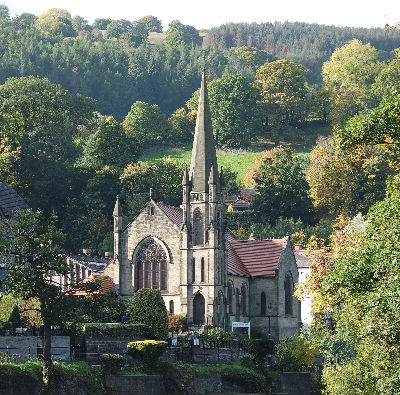SATURDAY
25th August 2018
6:30PM - 9:30PM
Step onboard and soak up the atmosphere whilst enjoying the Real Ales on offer at our well stocked bar.
TICKETS
Price: £18.00
Real Ale Train
6.30pm departure from Llangollen Station
Step on board and soak up the atmosphere whilst enjoying the Real Ales on offer at our well stocked bar.
Double return journey – arrive back approximately 9.30pm.
£18 Advanced ticket price includes a free Llangollen Railway pint glass.
REAL ALE – £3 per pint, Wines and Soft Drink also available
Food will be available to purchase from The Station Cafe + Bar on the evening, along with a BBQ on the platform.
Reserved seating will be provided for parties of eight or more.
It is not advised that children attend this event.
Advanced tickets – £18 per person with a FREE Llangollen Railway Pint Glass
Tickets purchased on the evening – £20 per person
Due to the terms of our premise licence – Passengers are NOT permitted to bring their own alcohol on board the Real Ale Train. Any alcohol brought will be removed from the customer for the duration of the event, the railway reserves the right to refuse admittance if the request is not complied with. We apologise for any inconvenience this may cause.
Llangollen railway station in the town of Llangollen, Denbighshire, Wales, is a preserved railway station on the former Ruabon to Barmouth Line, and now the eastern terminus of the preserved Llangollen Railway
Manorhaus Llangollen
Address: Hill St, Llangollen LL20 8EU, UK
Hours:
Closed ⋅ Opens 6PM
Phone: +44 1978 860775
The Llangollen Railway (Welsh: Rheilffordd Llangollen) is a volunteer-run heritage railway in Denbighshire, North Wales, which operates between Llangollen and Corwen. The standard gauge line, which is 10 miles (16 km) long, runs on part of the former Ruabon - Barmouth GWR route that closed in 1965. It operates daily services in the summer as well as weekends throughout the winter months, using a variety of mainly ex-GWR steam locomotives as well as several diesel engines.
A 2 1⁄2 miles (4 km) extension of the railway has been built to complete the line to Corwen.
History
Main articles: Vale of Llangollen Railway and Ruabon to Barmouth Line
Commercial Service: 1865–1962
Llangollen was already a popular place for tourists by the 1840s. Travel up to this point had been by horse-drawn carriage, but by the 1840s the Shrewsbury to Chester line had been completed, allowing passengers to alight at Llangollen Road (later known as Whitehurst Halt), and then take a coach towards Holyhead.
However, the commercial development of the local mining industry meant that the development of a railway became essential to the region's economic development. A number of schemes were proposed, including one by the LNWR, but it was not until 1 August 1859 that scheme engineered by Henry Robertson received Royal Assent. The 5 1⁄4 miles (8.4 km) Vale of Llangollen Railway left the Shrewsbury to Chester main line 1⁄2 mile (0.8 km) south of Ruabon, and proceeded as a single track line on a double track route via Acrefair to the new station at Llangollen. The line opened to freight on 1 December 1861, and to passengers on 2 June 1862 at a temporary terminus on the town's eastern outskirts.
The extension to Corwen was undertaken by the associated but separate Llangollen and Corwen Railway company, and involved constructing a long tunnel under the Berwyn Mountains. It, together with the new centrally positioned and larger station in Llangollen, opened for service on 1 May 1865.
Closure
Designated for closure under the Beeching cuts, the railway closed to passenger services on Monday 18 January 1965. The section between Ruabon and Llangollen Goods Yard remained open for freight traffic until April 1968, but immediately after the cessation of operations the track was removed from the whole line between Ruabon and Barmouth.
Preservation
Class 109 and Class 108 DMU-Railcars at Llangollen.
Reopening: 1972–1975
After the Beeching Axe, the Flint and Deeside Railway Preservation Society was founded in 1972 with the aim of preserving one of the "axed" railways. Originally the society was interested in preserving the Dyserth to Prestatyn line; however that line was deemed unsuitable because a small amount of freight traffic was still using it. The society refocused its attention on the Llangollen to Corwen section of the Ruabon to Barmouth line. The local council granted a lease of the Llangollen railway station building and 3 miles (5 km) of track to the society, with the hope that the railway would improve the local economy and bring more tourists to Llangollen. The station reopened on 13 September 1975, with just 60 feet (18 m) of track.
Rebuilding and Resurrection: 1975–1996
Early progress was slow due to a lack of funding, though in 1977 Shell Oil donated a mile of unused track. Volunteers started laying the track with the aim of reaching Pentrefelin, 3⁄4 mile (1.2 km) from Llangollen. Work finished in July 1981 with the remaining quarter mile of track used to lay sidings at the old Llangollen Goods Junction to house the railway's growing fleet of rolling stock.
The working railway attracted the interest of many private companies, as well as the local council who renewed the lease of the land to the railway for a further 21 years. The Llangollen Railway Trust was gifted significant amounts of track, allowing the next extension of the line to Berwyn. This involved a £30,000 refurbishment by the local council of the Dee Bridge, which had fallen into disrepair since the commercial closure of the line. The first trains operated over the newly extended 1.75 mile (2.8 km) line to Berwyn in March 1986. As rebuilding work progressed train services were later extended (via the 689 yard long Berwyn Tunnel) to Deeside Halt (in 1990), Glyndyfrdwy (in 1993) and finally into Carrog on 2 May 1996.
Extension to Corwen
GWR 2884 Class number 3802 pulling a goods train during the Llangollen Railway steam gala weekend in 2011.
In 2011, work (including reconstruction work) finally started on the 2 1⁄2 miles (4.0 km) section of track past the site of the closed Bonwm Halt to Corwen. As the former Corwen station site has been in private use as an Ifor Williams Trailers showroom since 1990, and the track bed in between also sub-divided, a new temporary station has been built on the eastern side of the town.
The first stage of the project was completed in late 2014, with special trains running on 22 October 2014 to the new station at Corwen East for those who had contributed to the project. Regular passenger services to Corwen East started on 27 October 2014. The official opening, on 1 March 2015, was marked by a special train.
The project is now turning to look at a more permanent station within Corwen, with permanent facilities, and a run round loop.
Locomotives and rolling stock
Main article: List of Llangollen Railway rolling stock
Most trains are steam-hauled. The railway's workshops are currently the national focus of four major independent projects to rebuild steam locomotive types rendered extinct by scrapping in the 1960s - an ex-GWR 'Grange' Class 4-6-0, (represented by 'the 81st Grange' - No.6880 Betton Grange, being constructed from a combination of both new and existing locomotive parts), an ex-LMS Fowler 'Patriot' 4-6-0 (represented by a new-build engine, No.45551 The Unknown Warrior), an ex-GWR '4700' Class 2-8-0 'Night Owl'(the mainly new-build No.4709) and anex-LNER B17 4-6-0, (represented by a new-build engine, No.61673 'Spirit of Sandringham').
Llangollen (Welsh pronunciation: [ɬaŋˈɡɔɬɛn]) is a small town and community in Denbighshire, north-east Wales, situated on the River Dee and on the edge of the Berwyn mountains.
The bridge at Llangollen was built across the Dee in the 16th century to replace a previous bridge built in about 1345 by John Trevor, of Trevor Hall (later Bishop of St Asaph), which replaced an even earlier bridge built in the reign of King Henry I. In the 1860s the present bridge was extended by adding an extra arch (to cross the new railway) and a two-storey stone tower with a castellated parapet. This became a café before being demolished in the 1930s to improve traffic flow. The bridge was also widened in 1873 and again in 1968, using masonry which blended in with the older structure. It is a Grade I listed structure and a Scheduled Ancient Monument.
Way back home ;)






















































No comments:
Post a Comment